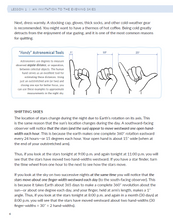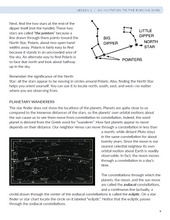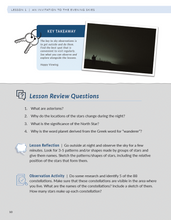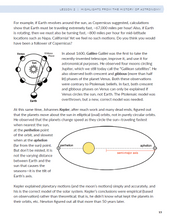
This text introduces high school students to the wonders of astronomy. This text is the result of Professor Charlesworth many, many years teaching this course. A background in trigonometry or other sciences is not a prerequisite. The text includes a brief history of astronomy, fundamentals of astronomy, the solar system, and the deep sky. This is a general education course and is suitable both for the lay person, who will not be continuing into the field of science, and for the student interested in pursuing scientific studies in college.
Charlesworth * Castro * Delgado
Course this book is used in:
- Astronomy:
- Homeschool
- Online
Astronomy Student Guide (homeschool and online)
Astronomy Teacher Guide (homeschool)
About Kolbe's Astronomy Course:
The course is designed to give students an appreciation of the order and complexity of creation, and of the order and complexity in the cosmos. Revelation and science complement each other in illuminating God’s glory. The course covers the different kinds of celestial objects, their characteristics, how they formed and developed, and their eventual fates. This includes a discussion of stars (including our sun), star groups, black holes, asteroids and comets, the earth, moon, and planets. It also covers the theories of the origin, development, and future of the universe, as well as whether other planets and life forms exist in space. The student will study, and have the opportunity to observe, the main stars and constellations for both summer and winter.
Kolbe Core (K) credit in the areas of physical science or academic elective is available to enrolled and registered students that follow the course plan and turn in the appropriate sample work. This course is typically done as an elective science course in the 12th grade and includes the following topics: history of astronomy, modern astronomy, electromagnetic waves, the universe, cosmology & theology, stars & constellations, sky observations, the solar system.



































